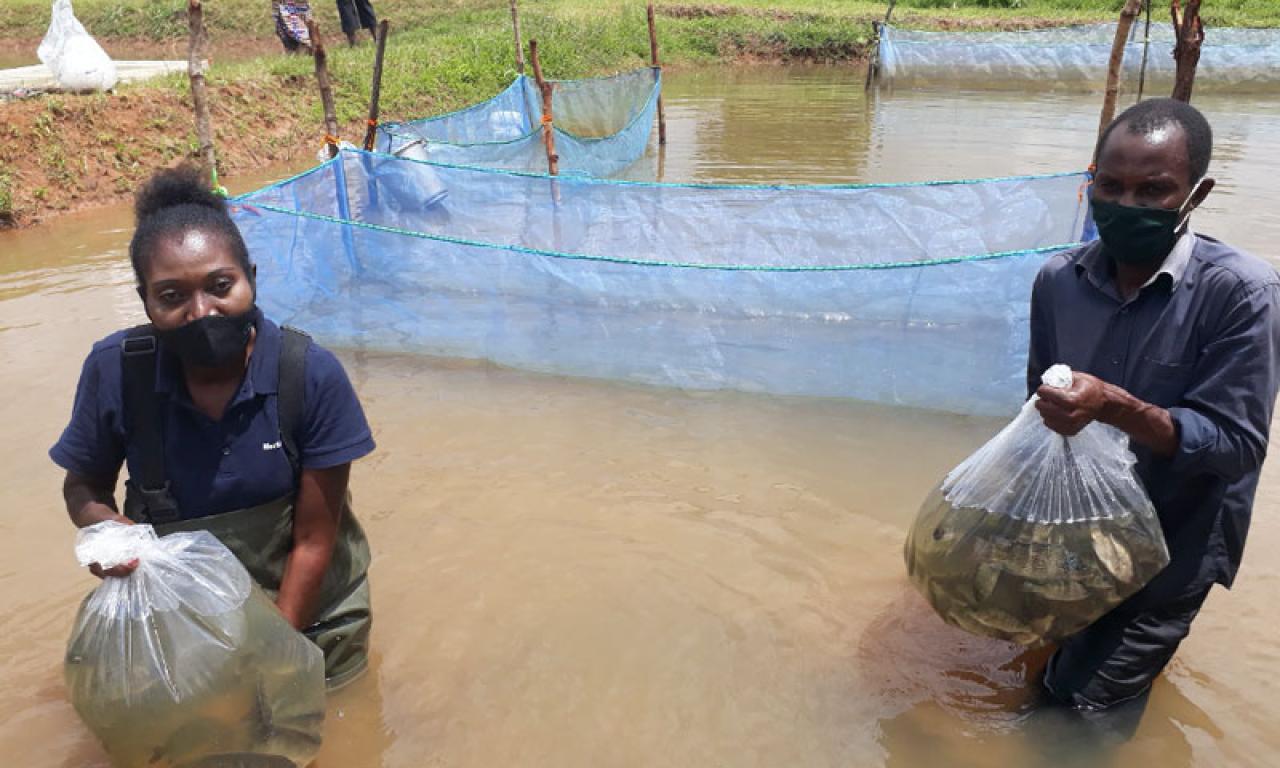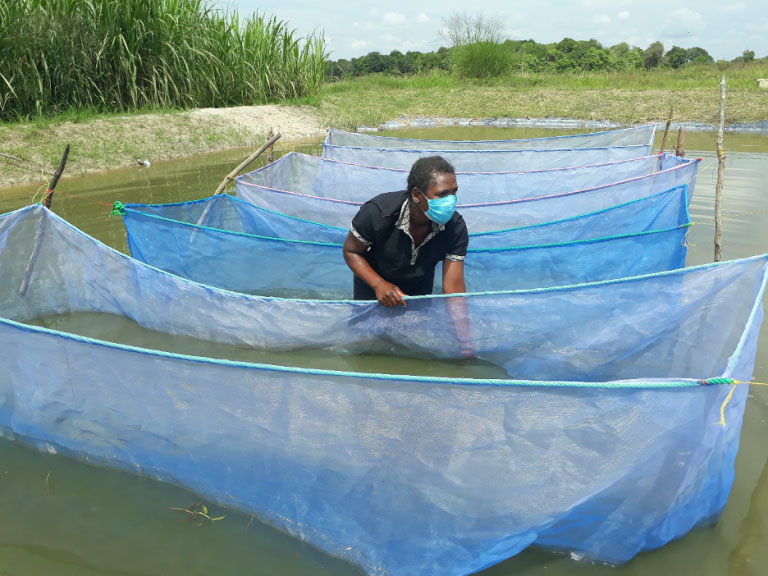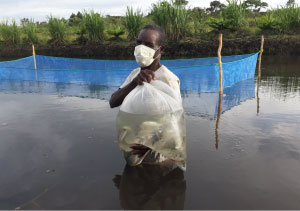
Aquatic foods caught and harvested in inland waters have long been an important part of the economy and diets in Zambia, which has 20 percent of its land covered by water. While inland fisheries have historically been the main way Zambians catch and harvest fish, the country’s expanding aquaculture sector has become a complimentary source of income and food and nutrition security.
Aquatic foods caught and harvested in inland waters have long been an important part of the economy and diets in Zambia, which has 20 percent of its land covered by water. While inland fisheries have historically been the main way Zambians catch and harvest fish, the country’s expanding aquaculture sector has become a complimentary source of income and food and nutrition security.
Zambia’s northern region, encompassing the Northern and Luapula Provinces, is currently home to more than 3,000 smallholder aquaculture farmers and has been selected for further aquaculture development by the Zambian government and development partners. Relative to other regions, the north experiences high rainfall patterns and hosts a network of rivers and larger water bodies suitable for aquaculture production. However, the sector’s capacity is hindered by a lack of suitable infrastructure and operational inputs.
Despite being richly endowed with water resources and favorable climate conditions, access to high-quality fish fingerlings is limited. For optimal aquaculture production, young fish fingerlings must be healthy and at the right developmental stage to be stocked in ponds for fish production. The lack of quality fingerlings is one of the most constraining factors to aquaculture development in rural northern communities.
In a bid to boost northern Zambia’s aquaculture sector, WorldFish researchers are establishing hatcheries in rural communities using hapa-based production systems, which facilitate the nursing of small fish fry into larger, more predator-resistant fingerlings. Originating in Southeast Asia, these fine-mesh nylon net cages have long been used to construct nurseries for Chinese carps. WorldFish is introducing this proven technology into sub-Saharan Africa, increasing collaboration and innovation among countries in the Global South.
The work is undertaken as part of WorldFish’s Inclusive Business and Entrepreneurial Models (IBEM) for smallholder farmers in Zambia and funded by GIZ. Researchers are working to overcome shortages in high-quality inputs and barriers to production by disseminating novel technologies and training diverse actors as hatchery operators, aiming to build the capacity of the nation’s small-scale aquaculture sector.
Meeting demand with novel technologies

Government-run hatcheries in the northern region cannot meet the growing demand for fish fingerlings, facing logistical challenges to supply rural and isolated farmers. Without adequate supply, the majority of farmers must purchase fingerlings from neighboring farmers.
Use of poor quality or recycled fingerlings negatively impacts aquaculture production and outputs. Farmers also often unknowingly purchase stunted fish from other farmers, leading to economic losses and low yields.
“Sometimes the fish’s size indicates that they are fingerlings, but they turn out to be stunted adults. Once you buy those fish and stock, you can feed them endlessly, but they do not grow bigger,” said one farmer in the pilot program.

To increase the availability of quality fish fingerlings, WorldFish is currently working on the distribution of parent stock to hatchery operators. Quality broodstock, or mature fish used for breeding purposes, is needed to jumpstart hatchery operations and provide the initial supply of fish fry.
In collaboration with the Department of Fisheries, WorldFish researchers have facilitated the training of 30 hatchery operators in 10 districts on how to produce quality fish fry and fingerlings using the hapa-based production systems. Hapa nursery systems minimize the loss of fry and are highly efficient at rearing high-quality fingerlings, which are then used to stock ponds. Hapa technology facilitates a steady supply of fish, providing a resilient and renewable source of income for small-scale farmers.
Continued training and mentorship of hatchery operators remains an integral part of the inclusive business and entrepreneurial model—hapa-based hatchery operators have been trained to advise other farmers on best management practices for aquaculture. It is hoped that this training will raise farmers’ collective knowledge on novel technologies and foster collaboration.
Increasing the availability and supply of quality fry and fingerlings, along with the development of superior feed, is needed to enhance the productivity and profitability of smallholder farmers across northern Zambia—improving economic outcomes and alleviating poverty for vulnerable actors.
